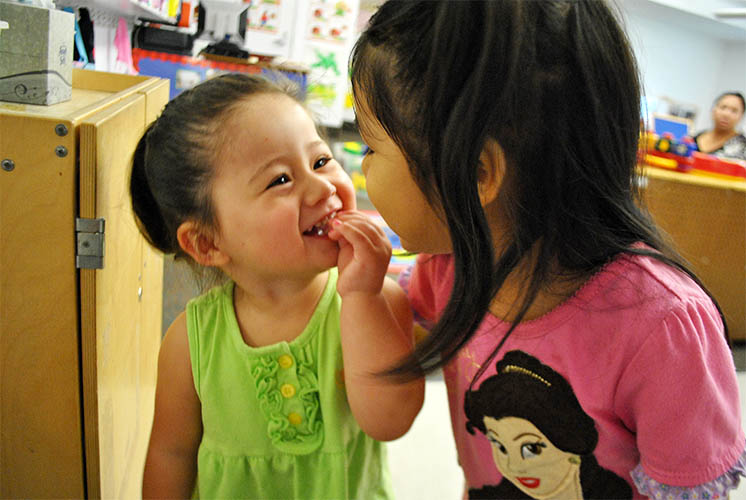In 2000, The National Research Council and Institute of Medicine convened a committee of national experts to evaluate and integrate the science of early childhood development. The result of this effort was published in a groundbreaking report, From Neurons to Neighborhoods: The Science of Early Childhood Development (Institute of Medicine 2000). The information in this report analyzed the most current information on brain development at the time and the latest findings from the social sciences.  The authors synthesized what was known about early childhood development and drew conclusions for policymakers, practitioners, researchers, and others invested in the healthy growth and development of children. They also emphasized three critical developmental tasks that characterize the importance of the first five years of life. An update report from a two-day workshop confirmed that these tasks are still important (Institute of Medicine and National Research Council, 2012).
The authors synthesized what was known about early childhood development and drew conclusions for policymakers, practitioners, researchers, and others invested in the healthy growth and development of children. They also emphasized three critical developmental tasks that characterize the importance of the first five years of life. An update report from a two-day workshop confirmed that these tasks are still important (Institute of Medicine and National Research Council, 2012).
-
Acquiring self-regulation — Self-regulation (an important aspect of early childhood mental health) is the process of “negotiating the transition from external to self-regulation, including learning to regulate one’s emotions, behaviors, and attention. This captures the emergence of self-control and independence, and can provide an analogy for the movement toward competent functioning that characterizes development as a whole” (Institute of Medicine 2000, 92).
Consider the remarkable transformation that occurs in all areas of development during the first five years of life. A newborn is completely dependent on his or her caregivers to meet every physical and emotional need. Over time, and in the context of supportive relationships, young children become increasingly competent in all areas of development. Typical preschoolers develop many of the skills for feeding, bathing, and dressing themselves; have some understanding of societal and familial norms, values, and morals; and can share their own unique opinions, preferences, and interests.
-
Communicating and learning — Communicating and learning refer to “acquiring the capabilities that undergird communication and learning. This includes the early development of language, reasoning, and problem solving” (Institute of Medicine 2000, 92).
The ability to communicate effectively begins in the earliest moments of life, as newborns experience having their needs met through the sensitive response of attentive caregivers. Parents learn through experience, and with support, how to successfully read their child’s cues and begin the back-and-forth “dance” of communication using their home language(s) that sets the stage for language development and learning. This back-and-forth dance is also known as “serve and return” (Center for the Developing Child at Harvard University and The National Scientific Council on the Developing Child, n.d.). During the preschool years, the communication dance evolves into increasingly sophisticated language and literacy skills in children’s home language(s) and English, as well as emerging cognitive skills such as the ability to reason, think logically, and problem solve.
-
Getting along with peers — Developing positive peer relationships involves “learning to relate well to other children and forming friendships. This highlights the emerging capacity to trust, to love and nurture, and to resolve conflict constructively” (Institute of Medicine 2000, 92).
Later in this paper, we show how relationships are the vehicle through which learning takes place. Clearly, the parent-child relationship is a child’s first opportunity to experience trust, love, and nurturing; this relationship forms the basis for learning to relate well to others (another important aspect of early childhood mental health). Because the parent-child relationship is fundamental to children’s development and learning, programs that serve children—from birth to age 5—and their families focus on strengthening parent-child relationships throughout program activities and services.
Read more:
Resource Type: Article
National Centers: Early Childhood Development, Teaching and Learning
Last Updated: December 5, 2019
